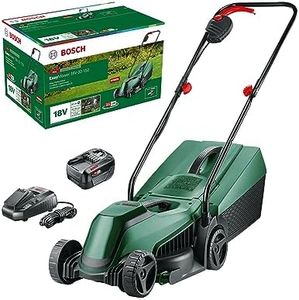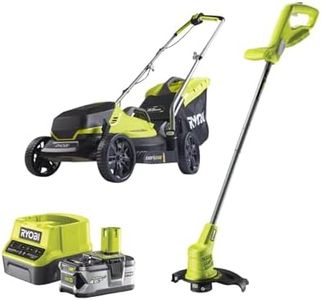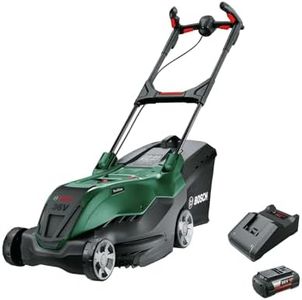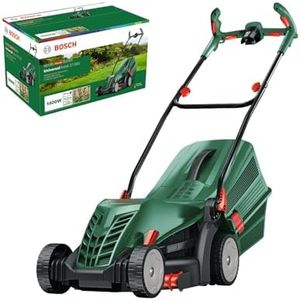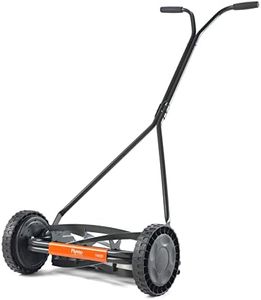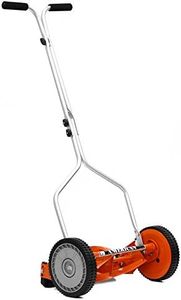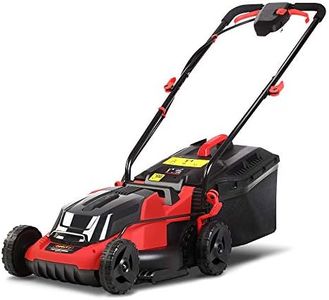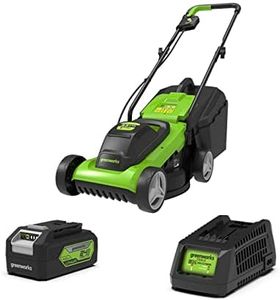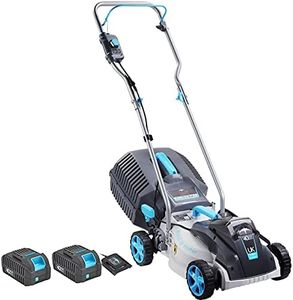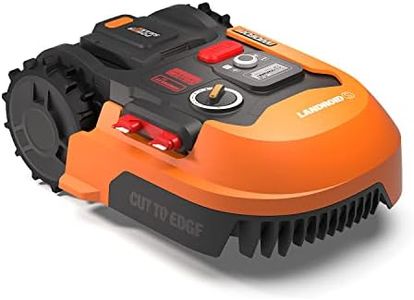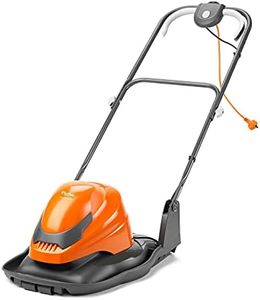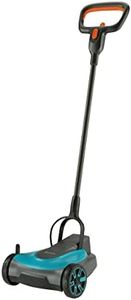We Use CookiesWe use cookies to enhance the security, performance,
functionality and for analytical and promotional activities. By continuing to browse this site you
are agreeing to our privacy policy
10 Best Small Electric Lawn Mowers
From leading brands and best sellers available on the web.By clicking on a link to a third party's website, log data is shared with that third party.
Buying Guide for the Best Small Electric Lawn Mowers
Choosing a small electric lawn mower can seem tricky, but if you focus on what suits your lawn size, personal comfort, and maintenance preferences, you’ll find the right fit. Electric mowers are usually quieter, easier to start, and require less upkeep than gas models, making them perfect for smaller yards and those who don’t want to deal with fumes. Your choice should be guided by the size of your lawn, the type of grass, and how often you mow.Power Source (Corded vs Cordless/Battery)This refers to how the mower receives its energy: either through a cable plugged into an outlet (corded) or from a rechargeable battery (cordless). Corded mowers never run out of power but limit your range and may get tangled, which fits well for very small, obstacle-free lawns near power sources. Cordless mowers offer more freedom, no cables to manage, and are great if you have more yard to cover or lots of trees, but you’ll need to consider battery life, charging time, and possibly spare batteries.
Cutting WidthCutting width is the size of the area the mower can cut with each pass, usually measured in inches. A smaller cutting width (around 13-15 inches) is light and easy to maneuver for tiny, intricate lawns or yards with flower beds and obstacles. Medium widths (16-18 inches) offer a balance between efficiency and maneuverability, while larger widths (19-21 inches) cover more ground quickly but may be heavier and harder to turn in tight spaces. Match the width to your yard’s layout and your willingness to push a wider mower.
Battery Life/Run TimeBattery life is the amount of time a cordless mower can operate before needing to recharge. Shorter run times (about 20-30 minutes) suit small yards that can be finished in one go, while longer run times (40 minutes or more) are better for slightly larger small yards or if you tend to mow slowly. Pick the expected run time based on how much grass you need to cut at once, and remember, you can always pause to recharge or swap batteries.
Cutting Height AdjustmentThis spec means how easily and in how many steps you can raise or lower the mower’s blades to set how tall the grass will be after cutting. Some mowers offer only a few positions, while others give more fine control. If you like experimenting with different grass heights for health or appearance, look for more adjustment options. Simpler yards and less fussy users may be fine with just a couple of settings.
Grass Clipping Management (Bagging, Mulching, Side Discharge)This covers what happens to the grass after it’s cut. Bagging collects clippings in an attached bag for easy cleanup, mulching chops them up fine and spreads them back onto the lawn as natural fertilizer, and side discharge shoots clippings out to the side. If you want a clean finish and don’t want to rake, bagging is best. If you prefer nurturing your lawn with nutrients, mulching is a good choice. Side discharge works when you don’t mind a less tidy look or mow regularly to avoid clumps.
Weight and ManeuverabilityWeight indicates how heavy the mower is and affects how easy it is to push or carry around. Lighter mowers are easier to maneuver, especially in small or uneven yards, up steps, or if storage requires lifting. Heavier mowers may feel more robust but can be harder to handle for some people. Think about your own strength, yard layout, and whether you’ll need to lift or carry the mower.
Noise LevelElectric mowers are already quieter than gas models, but some are even quieter than others. This matters if you want to avoid disturbing neighbors, mow early or late, or simply prefer a quieter yard. If noise sensitivity is high for you or your family, look for mowers advertised with lower decibel levels.
